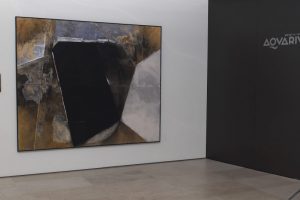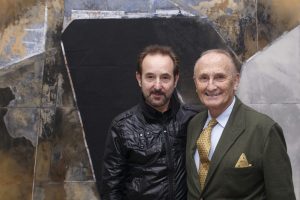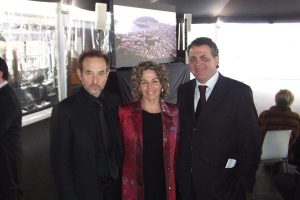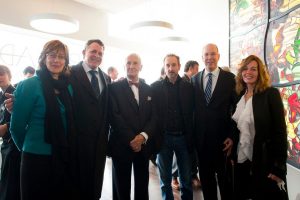
‘THE GRAVEYARD BY THE SEA – HOMAGE TO PAUL VALÉRY’ BY BIKONDOA AT THE GIPUZKOA OCEANOGRAPHIC FOUNDATION OF SAN SEBASTIAN
06/25/08 al 12/31/08
Exhibition of Bikondoa offered as part of the events held at the Centennial Commemoration of the Gipuzkoa Oceanographic Foundation in San Sebastian and the re-inagurtion of its renovated facilities, which will be presided over by SS MM King and Queen of Spain and S.A.R the Princess Carolina de Monaco.
Vicente Zaragüeta Lafitte, President of the Gipuzkoa Oceanographic Foundation
It is my honour and pleasure, as a lover of the arts, to welcome you as the very first people to have the opportunity to observe the creative journey of a great contemporary artist through Valery’s famous poem The Graveyard by the Sea. The works which Alfredo Bikondoa has created specially for this occasion are multidisciplinary in their forms, techniques and materials, and they translate into plastic form the poetic essence which he was able to ‘see’ beyond the verses and metaphors of the literary work which inspired them. His creations open un for us as spectators a profound and essential reality which causes us to look at ourselves with new eyes, and to ‘recognize’ ourselves in the perception of physical sensations, emotions and feelings. They are the handwork of an unusual artist with a surprisingly wide range of artistic language who has found his own -highly original- voice with which to address contemporary sensibilities.
The ‘journey’ is beginning, for us, now. I welcome you and invite you to share it in a joyful transit.
‘The Graveyard by the sea – Homage to Paul Valéry’
Bikondoa knew from very young Valeryan graveyard. In it he deepened, as in contemporary French culture, during his long stays in Paris in the late 60s and 70s.
It is at this time and after seventeen years of voluntary artistic silence immersed in an inner search for the paths of Zen, when Bikondoa is reunited with The Graveyard by the Sea, aware of the astonishing concomitances that took place between his own trajectory and that of the French poet. In fact, as Gustave Cohen, the literary critic best acquainted with the work and life of Valéry, points out, “Between 1892 and 1913, a phenomenon almost unique in literary history, Paul Valéry remained silent to concentrate for twenty years, in solitary meditation on the transformations of the soul and the forms of his creative activity in a state of waking or sleep, the results of which, in 1920, reflected in the shudder and the rhythms of poetic personal confidence that emerges from the verses of The Graveyard by the sea”.
As Valéry, Bikondoa, emerging from his long meditative lethargy, reborn and renewed for action, seeks, needs to express himself by going beyond formal appearance, and -again citing Cohen- “…to substitute the direct expression of the image, for the expression of a deeper reality through successive and suggestive images born of association of ideas.”
It is the moment for Bikondoa to give way, in the furrows, the incisions, the shards, the chromatic contrasts, the marine muds and the metallic echoes that are generated in his ‘physical confrontation’ with the materials used in his works, to ‘his’ expression of the visions a rising from his attentive and passionate reading of The Graveyard by the Sea.






